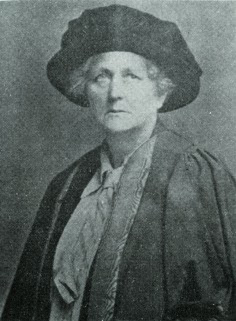Aleen Cust
Aleen Cust (1868–1937) was the first woman to become a veterinary surgeon in Britain, overcoming significant barriers due to her gender. Born in County Tipperary, Ireland, Cust's journey into veterinary medicine was met with resistance, as the profession was exclusively male at the time. Despite these challenges, she pursued her passion for animal care and became a pioneering figure in veterinary science.
Early Life[edit | edit source]
Aleen Cust was born into an Anglo-Irish aristocratic family. Her interest in animals and their welfare was evident from a young age. However, societal norms of the era made it difficult for women to pursue careers, especially in fields dominated by men like veterinary science.
Education and Career[edit | edit source]
Determined to follow her passion, Cust moved to England to pursue her education in veterinary science. She enrolled at the New Veterinary College, Edinburgh in 1894, despite the fact that the Royal College of Veterinary Surgeons (RCVS) did not allow women to take their qualifying exams. Cust studied under Professor William Williams, the college's principal, who was supportive of her ambitions.
After completing her studies in 1900, Cust faced the obstacle of not being allowed to officially qualify or practice as a veterinary surgeon due to her gender. Undeterred, she worked as an assistant to a series of veterinary surgeons, gaining practical experience and building her reputation in the field.
In 1910, she moved to Athleague, County Roscommon, where she worked for the remainder of her career. Cust became well-respected within the community for her dedication and skill in treating animals.
Struggle for Recognition[edit | edit source]
Aleen Cust's struggle for official recognition continued for many years. It was not until after World War I, a time when women's contributions to society were being reevaluated, that the RCVS began to reconsider its position on female veterinarians.
Finally, in 1922, the Sex Disqualification (Removal) Act 1919 forced the RCVS to allow women to become members. Aleen Cust was the first woman to be officially recognized as a veterinary surgeon in Britain when she was finally allowed to sit her exams and was registered in 1923.
Legacy[edit | edit source]
Aleen Cust's perseverance and dedication not only paved the way for future generations of women in veterinary medicine but also challenged societal norms regarding women's roles in professional fields. She is remembered as a trailblazer who broke through gender barriers in her pursuit of a career in veterinary science.
Cust's legacy is celebrated in the veterinary community, and her story is an inspiration to those facing obstacles in achieving their professional goals. She demonstrated that with determination and resilience, it is possible to overcome systemic barriers and make significant contributions to one's field of passion.
Death and Memorials[edit | edit source]
Aleen Cust passed away in 1937. Her life and achievements are commemorated in various ways, including awards and scholarships established in her name to support women pursuing careers in veterinary medicine.
Search WikiMD
Ad.Tired of being Overweight? Try W8MD's physician weight loss program.
Semaglutide (Ozempic / Wegovy and Tirzepatide (Mounjaro / Zepbound) available.
Advertise on WikiMD
|
WikiMD's Wellness Encyclopedia |
| Let Food Be Thy Medicine Medicine Thy Food - Hippocrates |
Translate this page: - East Asian
中文,
日本,
한국어,
South Asian
हिन्दी,
தமிழ்,
తెలుగు,
Urdu,
ಕನ್ನಡ,
Southeast Asian
Indonesian,
Vietnamese,
Thai,
မြန်မာဘာသာ,
বাংলা
European
español,
Deutsch,
français,
Greek,
português do Brasil,
polski,
română,
русский,
Nederlands,
norsk,
svenska,
suomi,
Italian
Middle Eastern & African
عربى,
Turkish,
Persian,
Hebrew,
Afrikaans,
isiZulu,
Kiswahili,
Other
Bulgarian,
Hungarian,
Czech,
Swedish,
മലയാളം,
मराठी,
ਪੰਜਾਬੀ,
ગુજરાતી,
Portuguese,
Ukrainian
WikiMD is not a substitute for professional medical advice. See full disclaimer.
Credits:Most images are courtesy of Wikimedia commons, and templates Wikipedia, licensed under CC BY SA or similar.
Contributors: Prab R. Tumpati, MD

